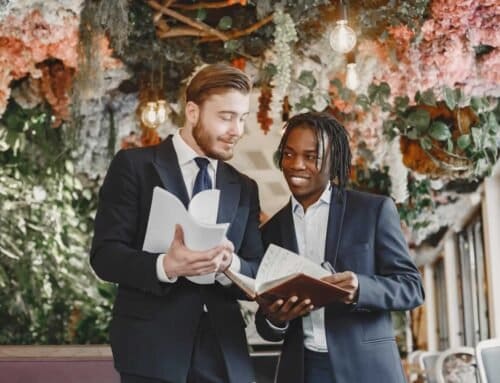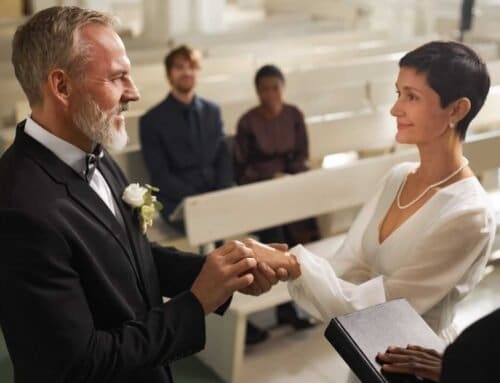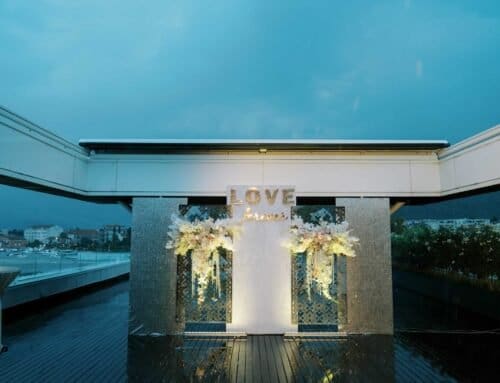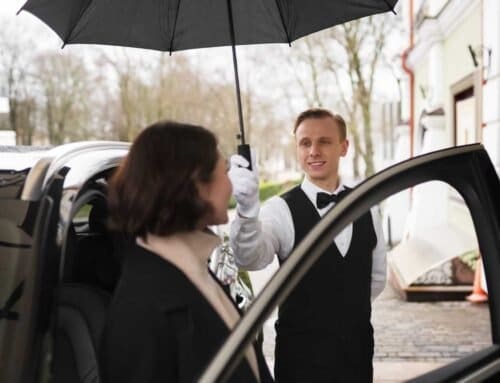Vow Renewal vs. Wedding: Understanding the Key Differences
Learn the key differences between a vow renewal and a wedding ceremony. Understand their unique purposes, traditions, and how to plan each event.
As you plan to celebrate your love, you might find yourself wondering what the difference are between a vow renewal and a wedding. While both ceremonies are beautiful expressions of commitment, they serve different purposes and carry distinct traditions. Understanding the differences between a vow renewal and a wedding can help you plan a vow renewal that will reflect your relationship’s unique journey.
This guide will walk you through the key distinctions between vow renewals and weddings, from their purposes and legalities to their structures and traditions.
Definition and Purpose
What is a Wedding?
A wedding is the formal ceremony that marks the legal and ceremonial union of two people. It’s often a significant cultural or religious event, involving traditions that vary widely across cultures. At its core, a wedding is about two people making a lifelong commitment to each other, typically witnessed by family, friends, and a legal officiant who validates the union.
- Purpose: A wedding is primarily about establishing a new legal and emotional bond between two individuals. It’s the starting point of their life together as a married couple, often celebrated with a large gathering and a formal reception.
What is a Vow Renewal?
A vow renewal, on the other hand, is a ceremonial event where a married couple reaffirms their commitment to one another. Unlike a wedding, a vow renewal is not a legal ceremony—it’s purely symbolic. Couples often choose to renew their vows to celebrate a significant anniversary, overcome challenges, or simply reaffirm their love.
- Purpose: The purpose of a vow renewal is to celebrate the ongoing journey of marriage. It’s a chance to reflect on the years spent together, the challenges overcome, and the continued love and commitment that have deepened over time.
Legal and Formal Aspects
Legal Requirements for a Wedding
A wedding involves several legal requirements. Couples must obtain a marriage license from the relevant authorities before the ceremony. The ceremony itself must be conducted by a legally recognized officiant, and there must be witnesses present. After the ceremony, the marriage is legally registered.
- Key Elements: Marriage license, legally recognized officiant, witnesses, and legal registration.
- Legal Impact: A wedding establishes a legal bond that affects rights and responsibilities, including property rights, inheritance, and tax benefits.
No Legal Requirements for a Vow Renewal
In contrast, a vow renewal is entirely symbolic and does not require any legal documentation. Since the couple is already legally married, there’s no need for a marriage license, officiant, or legal witnesses. The ceremony is often more flexible, focusing on personal expression rather than legal formalities.
- Key Elements: Personal vows, symbolic gestures, and flexibility in ceremony structure.
- Legal Impact: None. A vow renewal does not change the legal status of the marriage.
Ceremony Structure
Traditional Wedding Ceremony
A traditional wedding ceremony usually follows a specific structure, which may include a processional, exchange of vows, exchange of rings, and pronouncement of marriage by the officiant. The ceremony is often followed by a formal reception, which includes a meal, speeches, and dancing.
- Processional: The entrance of the bridal party and the couple, often accompanied by music.
- Exchange of Vows and Rings: The couple exchanges promises and rings, symbolizing their commitment.
- Officiant’s Role: The officiant leads the ceremony, ensuring all legal and ceremonial aspects are fulfilled.
Vow Renewal Ceremony
A vow renewal ceremony, while similar in some ways, tends to be more relaxed and personalized. There’s no set structure, allowing couples to design a ceremony that reflects their journey and relationship. Some may choose to include elements like the exchange of vows, while others might focus on sharing personal stories or including family members in the ceremony.
- Flexible Structure: No legal or religious requirements dictate the ceremony, allowing for creativity.
- Personalized Elements: Couples can choose to exchange new rings, recite their original vows, or create new ones that reflect their journey together.
- Family Involvement: Often, children or grandchildren may play a role in the ceremony, making it a family celebration.
Guest List and Invitations
Wedding Guest List
Weddings often have a larger guest list, including close family, friends, and sometimes extended social circles or colleagues. Invitations are typically formal, and the event may involve multiple related gatherings, such as rehearsal dinners and post-wedding brunches.
- Formal Invitations: Sent out months in advance with detailed information about the ceremony, reception, and any additional events.
- Larger Guest List: Weddings often include a wide array of guests, from immediate family to distant relatives and friends.
Vow Renewal Guest List
A vow renewal ceremony usually has a smaller, more intimate guest list. It’s often limited to close family members and friends who have been significant in the couple’s journey. The tone is usually more personal, and the invitations may be less formal.
- Personal Invitations: While still thoughtful, vow renewal invitations can be more casual and personalized, reflecting the informal nature of the event.
- Smaller, Intimate Gathering: The focus is on those who have played an important role in the couple’s marriage, making for a more intimate celebration.
Attire and Traditions
Traditional Wedding Attire
Weddings typically feature formal attire, with the bride in a wedding gown and the groom in a suit or tuxedo. Bridal parties, including bridesmaids and groomsmen, also wear coordinated outfits that align with the wedding’s color scheme and theme.
- Bride’s Attire: A formal wedding gown, often white or ivory, symbolizing purity and new beginnings.
- Groom’s Attire: A suit or tuxedo, typically in a color that complements the bride’s gown.
- Bridal Party Attire: Bridesmaids and groomsmen wear matching or complementary outfits.
Vow Renewal Attire
For a vow renewal, the attire is often less formal and more reflective of the couple’s current style and preferences. Some couples choose to wear their original wedding attire, while others opt for something new that reflects the tone of the event.
- Flexible Attire: Couples can wear anything from their original wedding clothes to casual or themed outfits, depending on the nature of the ceremony.
- Symbolic Choices: Some couples choose attire that symbolizes their journey, such as incorporating elements from their wedding day with new additions.
Symbolism and Meaning
Symbolism in Weddings
Weddings are rich with symbolism, from the exchange of rings to the unity ceremonies like candle lighting or sand pouring. These elements represent the beginning of a new life together and the union of two individuals into one partnership.
- Exchange of Rings: Rings symbolize the unbroken circle of love and commitment.
- Unity Ceremonies: Activities like lighting a unity candle or pouring sand signify the joining of two lives.
Symbolism in Vow Renewals
In a vow renewal, the symbolism often centers around the enduring nature of the couple’s love and commitment. The focus is on reaffirming vows, celebrating milestones, and acknowledging the journey of marriage.
- Reaffirmation of Vows: Renewing vows symbolizes the couple’s continued commitment and love.
- Celebration of Journey: The ceremony may highlight significant moments in the couple’s marriage, such as overcoming challenges or reaching important milestones.
Reception and Celebration
Wedding Reception
Wedding receptions are typically formal affairs, with a structured program that includes a meal, speeches, cake cutting, and dancing. The reception is often one of the most anticipated parts of the wedding day, filled with traditions like the first dance and bouquet toss.
- Formal Program: Includes speeches, a meal, and various wedding traditions.
- Entertainment: Music, dancing, and other forms of entertainment are common.
- Traditions: Activities like the first dance, cake cutting, and bouquet toss are often included.
Vow Renewal Celebration
A vow renewal celebration can be more relaxed and personal. Some couples choose to have a small dinner with family and friends, while others might opt for a casual gathering at home or a favorite restaurant. The focus is on spending quality time with loved ones rather than adhering to traditional wedding reception formats.
- Relaxed Atmosphere: The celebration is often less formal, focusing on personal connections rather than traditional programs.
- Intimate Gatherings: Many couples prefer a smaller, more intimate celebration, such as a dinner or casual party.
- Personalized Events: The couple may choose activities that reflect their interests and relationship, such as a themed party or a trip.
Final Thoughts on Vow Renewal vs. Wedding
While a wedding is about beginning a life together with legal and ceremonial significance, a vow renewal is a symbolic reaffirmation of that ongoing commitment. Each has its own traditions, meanings, and structures.
If you’re ready to start planning your vow renewal, explore our resources and consult with a vow renewal specialist to help bring your vision to life.









